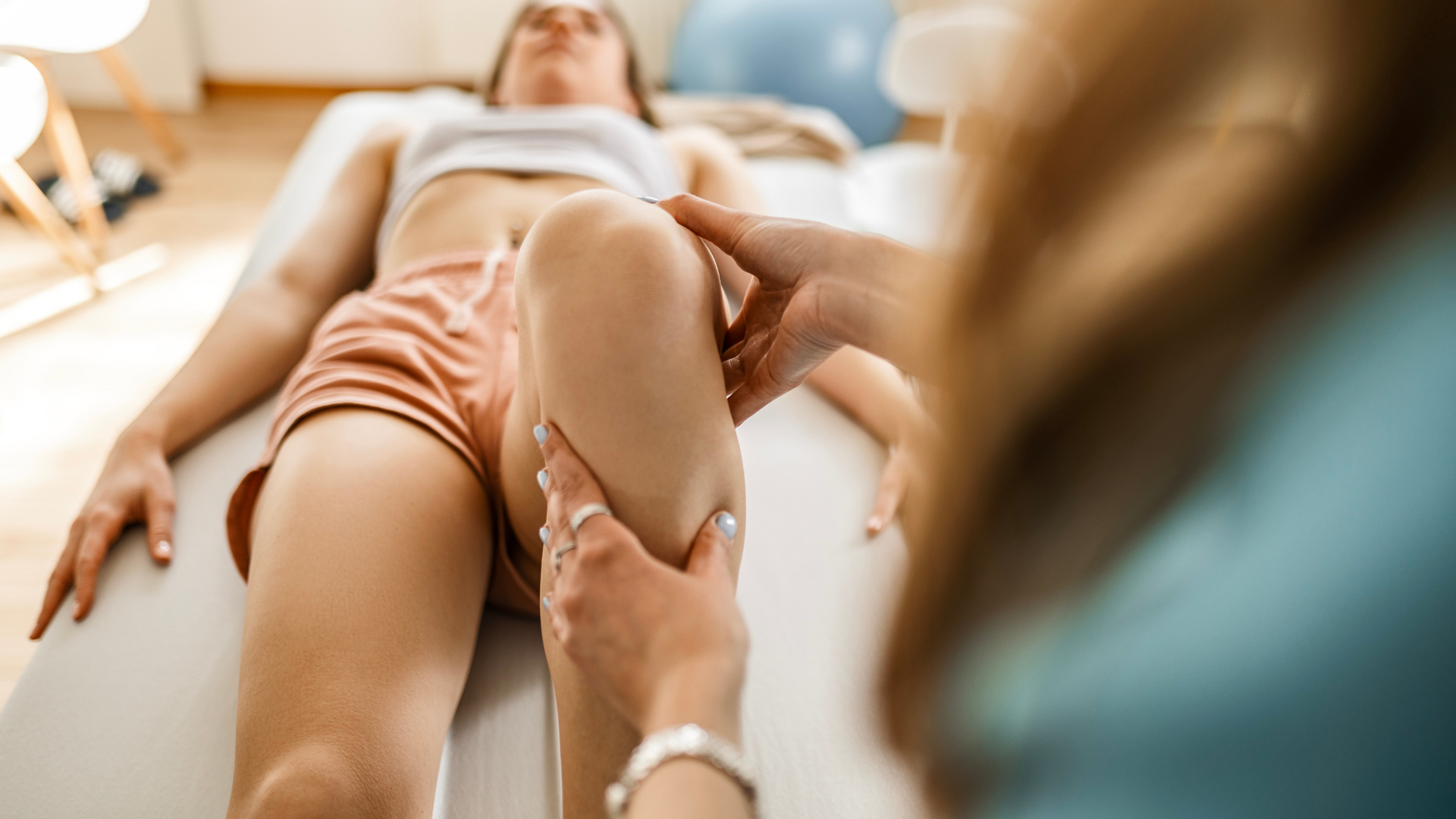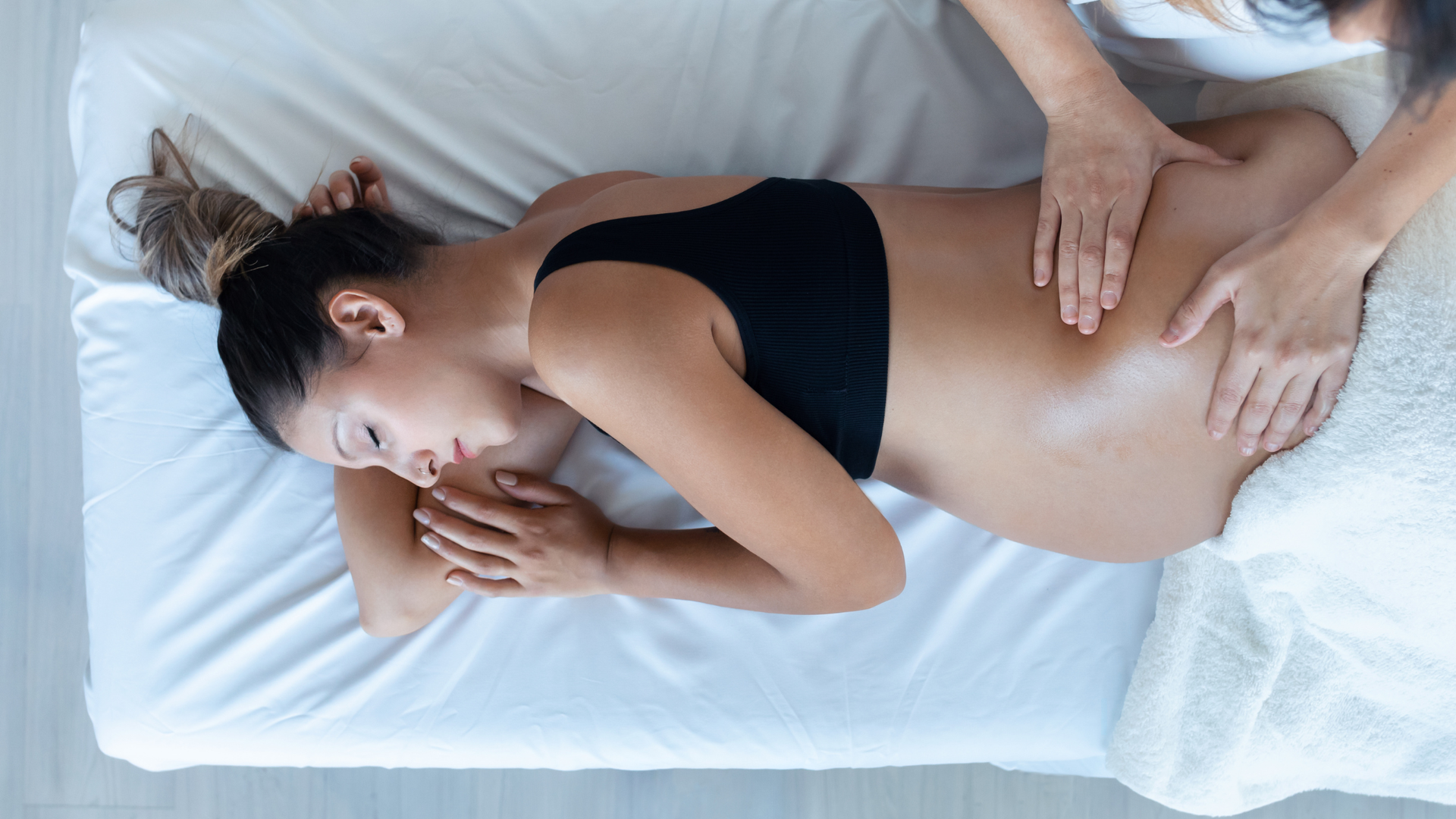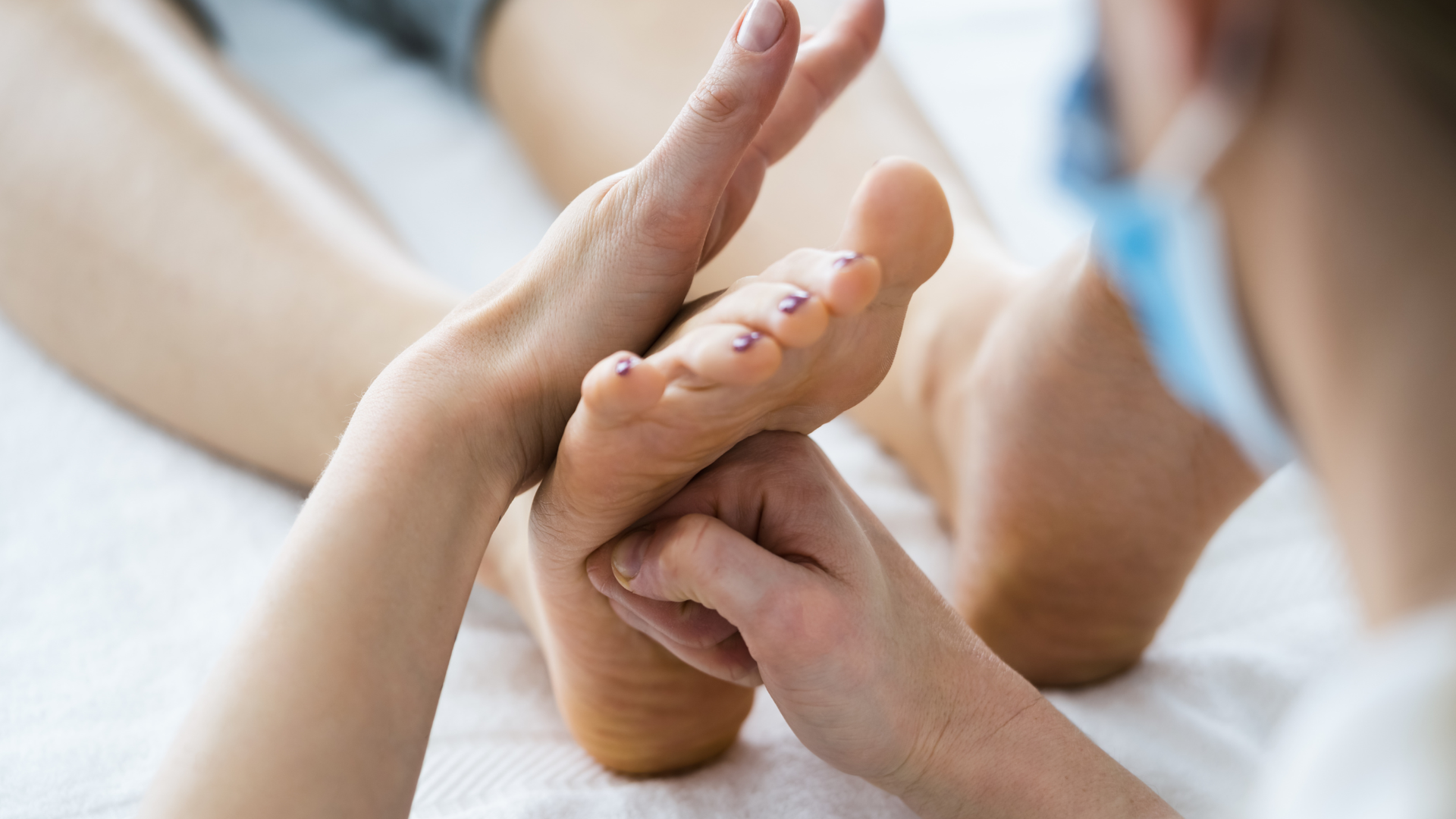The Foot - Turf Toe
Turf toe is more than just a sprain – It’s a debilitating injury that can severely limit function without the right management.

Try these low impact exercises for mild turf toe
Try these low impact exercises for mild turf toe
Turf toe often gets dismissed as a minor issue — “just a toe sprain” — but it can seriously affect your ability to walk, run, jump or change direction. The big toe plays a crucial role in stability and propulsion. Without proper diagnosis and rehabilitation, turf toe can become a chronic issue that limits performance and function.
Anatomy 101
The big toe joint, called the first MTP joint, is where the long bone in your foot meets the base of your big toe. This joint is supported by strong tissues, including ligaments, a tough capsule, and small bones under the toe called sesamoids. These parts work together to support your toe, especially when you bend it upwards. If too much force or pressure is placed on the toe, like during running or sudden stops, these tissues can get overstretched or torn. This type of injury is commonly known as “turf toe.”
Who gets it?
Turf toe is commonly seen in athletes playing on artificial turf, hence the name. Sports involving rapid acceleration, cutting, and contact (e.g., football, rugby, hockey, dance) put players at higher risk.
Common mechanisms of injury include:
- Contact injury – Another player lands on the back of the foot, forcing the toe into hyperextension.
- Non-contact injury – A sudden push-off or a change in direction causes the toe to jam into the ground, as can occur when changing direction from running backwards to running forwards.
Grading & severity of Turf Toe:
Severity of injury exists on a continuum, with Grade I being a “stretching” of the soft tissues underneath the toe, Grade II being “partially torn” soft tissues, and Grade III involves complete tearing and may include associated injuries such as fractures, joint dislocation, sesamoid fracture, or a plantar plate rupture.
Symptoms of Turf Toe
Symptoms can vary depending on severity, but the following signs should prompt a closer look
- Pain at base of the big toe
- Aggravated during push-off with walking, running or jumping
- Swelling and bruising around the big toe
- Restricted motion and loss of strength
- In severe cases, instability or visible deformity
Diagnosis and injury grading
Your physiotherapist can diagnose turf toe with a thorough clinical assessment, including history and physical examination. Key diagnostic clues that can help confirm a diagnosis.
- Mechanism of Injury (hyperextension)
- Location of pain and swelling
- Joint laxity or instability
- Reduced Push-off strength and pain
Turf toe injuries are graded according to presenting signs and symptoms.
Grade 1: “stretching”
- Mild localized tenderness
- Mild swelling
- No bruising
- No Instability
- Able to weight bear
Grade 2: “Partial Tear”.
- Diffuse, widespread tenderness
- Moderate swelling
- Bruising
- Limited Range of movement
- Difficulty weight bearing, particularly in later stance phase
Grade 3: “Complete Rupture”
- Severe tenderness
- Significant swelling
- Pronounced loss of movement
- Frank instability
- Unable to weight bear
Do I need imaging?
Most cases don’t require imaging, but your physiotherapist will use clinical judgement to determine if a more serious injury is present. The physiotherapist may recommend an X-Ray or MRI if there is concern for:
- Fractures
- Complete Ligament Tears
- Significant Joint Instability
- Sesamoid Injuries
Treatment
Management depends on the time frame that's elapsed since injury and presenting to physiotherapy, the grade of injury, current functional limitations, and the specific goals and requirements of the individual. Regardless of the severity of the injury, rehabilitation will include the following components.
- Period of Immobilisation (taping, toe splint, orthotics, possibly a boot for more severe injuries)
- Joint mobilisation to regain normal range of motion (especially toe extension)
- Calf and foot strengthening
- Proprioceptive training (e.g., balance drills)
- Sport-specific return to play reconditioning
Surgical Intervention
Fewer than 2% of turf toe injuries require surgery. However, in high-level athletes or in cases where conservative treatment fails, surgery may be needed to restore joint stability. Surgical repair may involve soft tissue reconstruction, fixation of the sesamoids or plantar plate.
How long is it going to take?
99% of Grade 1 and Grade 2 injuries recover well with conservative treatment provided they get appropriate physiotherapy intervention and a comprehensive rehabilitation program to restore big toe strength to allow a return to previous level of performance. Grade 3 injuries may take longer, and many never fully regain previous levels of performance without a structured rehabilitation plan.
As a guide, Grade 1 injuries take 1-2 weeks, Grade 2 injuries 3-6 weeks, while Grade 3 injuries can take 3 or more months to recover depending on the need for surgery.
The Take Home
Turf toe may sound minor, but when mismanaged it can become a chronic, debilitating issue that affects push-off, balance, and performance. Early diagnosis and structured rehabilitation are essential to prevent long term complications.
Got toe pain and want to get it sorted? Give us a call.
At Movement for Life Physiotherapy, we can assess and diagnose the cause of your toe pain and let you know whether you have turf toe, a toe fracture, or if there is something else going on. With a clear diagnosis and tailored management plan, we'll help get you back to the things you love sooner.
Give us a call now or click on BOOK AN APPOINTMENT to book online.
References
- Gupta, A., Singh, P. K., Xu, A. L., Bronheim, R. S., McDaniel, C. M., & Aiyer, A. A. (2023). Turf Toe Injuries in the Athlete: an Updated Review of Treatment Options, Rehabilitation Protocols, and Return-to-Play Outcomes. Current reviews in musculoskeletal medicine, 16(11), 563–574. https://doi.org/10.1007/s12178-023-09870-y
- Vopat, M. L., Hassan, M., Poppe, T., Tarakemeh, A., Zackula, R., Mulcahey, M. K., Mullen, S., Burkholder, R., Schroeppel, J. P., & Vopat, B. G. (2019). Return to Sport After Turf Toe Injuries: A Systematic Review and Meta-analysis. Orthopaedic journal of sports medicine, 7(10), 2325967119875133. https://doi.org/10.1177/2325967119875133
- Limaye, N., Sethi, M., & Ayyaswamy, B. (2024). Outcomes of Surgical Management of Turf Toe: 12-Year Results. Cureus, 16(4), e57808.
https://doi.org/10.7759/cureus.57808








